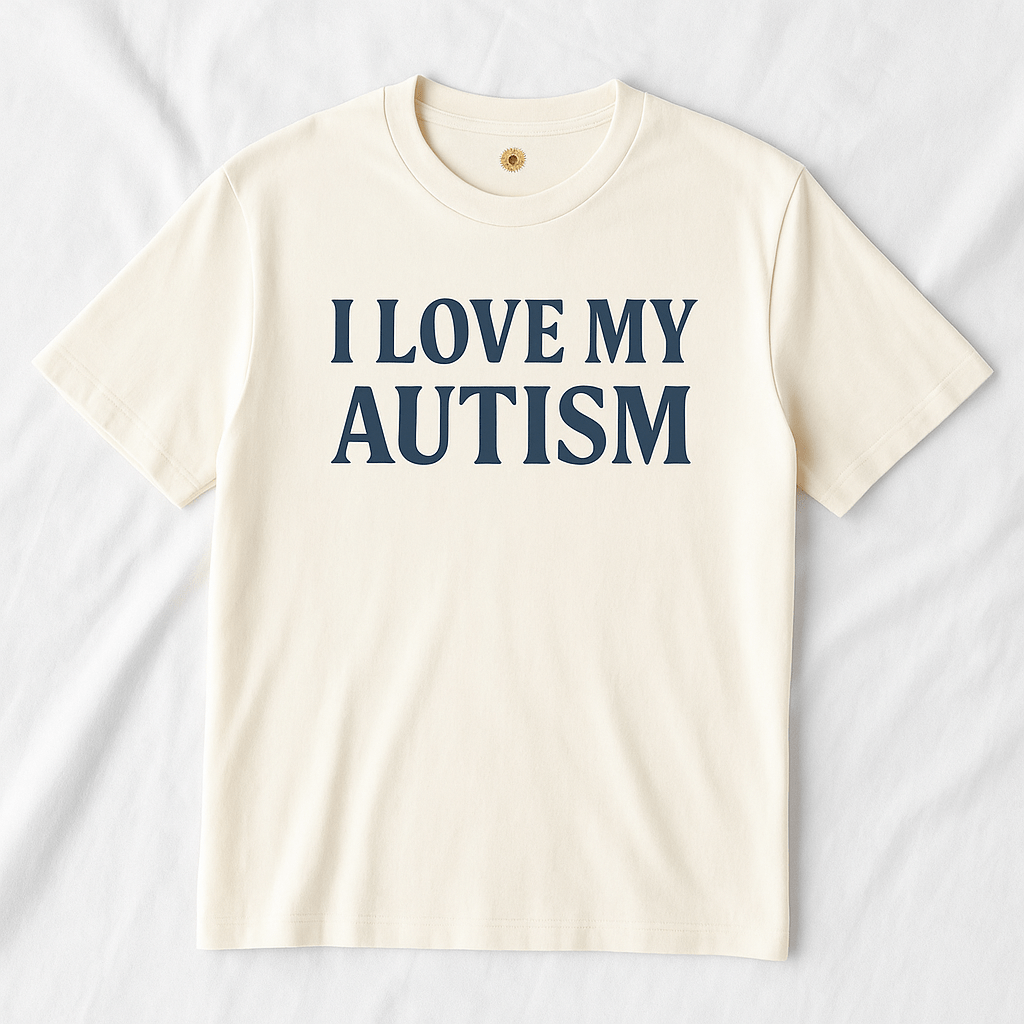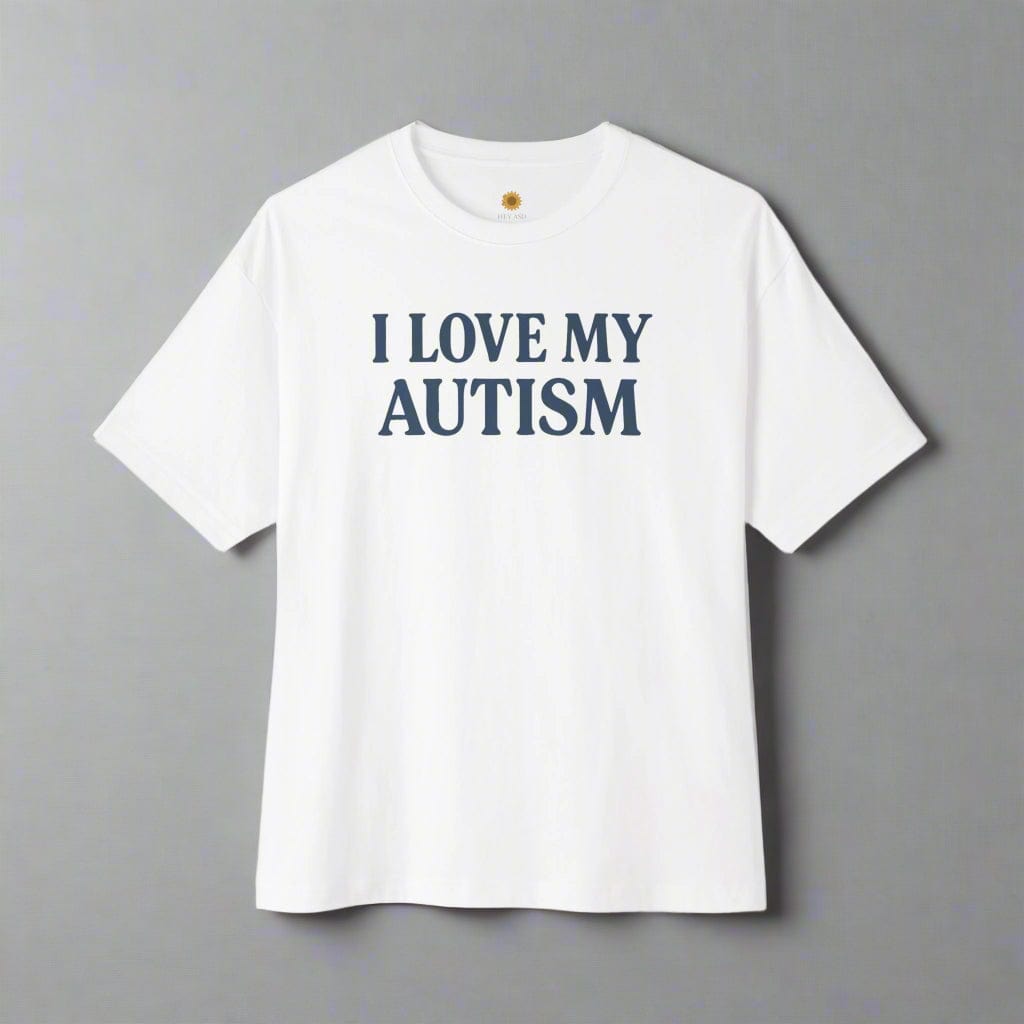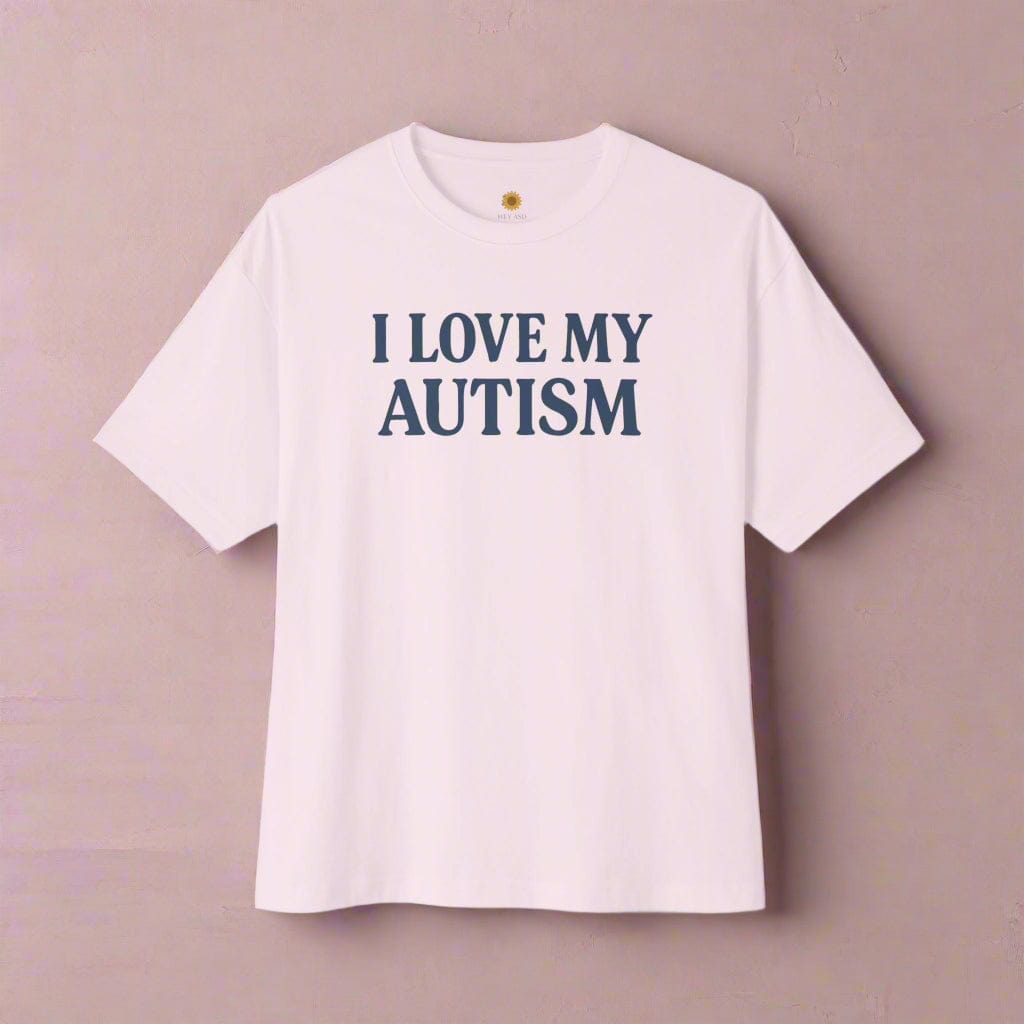Autism Research and Environmental Factors

Written by the HeyASD Editorial Team
Autism is a complex neurodevelopmental disorder that is influenced by both genetic and environmental factors. While genetic factors play a significant role in the development of autism, environmental factors also contribute to the risk. Understanding these environmental risk factors is crucial for proactive intervention and support. This article explores various environmental factors associated with autism and provides key takeaways for parents and caregivers.
Key Takeaways
- Environmental factors contribute to the risk of autism along with genetic factors.
- Maternal factors during pregnancy can influence the risk of autism in the child.
- Certain environmental exposures, such as toxins and pollutants, may increase the risk of autism.
- Nutrition and diet during pregnancy and early childhood may impact the risk of autism.
- Advanced parental age has been linked to an increased risk of autism.
Understanding Autism

What is Autism?
Autism, also known as Autism Spectrum Disorder (ASD), is a lifelong condition that typically appears in early childhood. It is a spectrum disorder, meaning that it affects individuals in different ways and to varying degrees. The core features of autism include challenges in social communication and interaction, such as difficulty with making eye contact, understanding and using nonverbal cues, and developing and maintaining relationships. Individuals with autism may also engage in restricted and repetitive behaviors. Autism is a complex disorder that is caused by a combination of genetic and environmental factors. While there is no known cure for autism, early intervention and treatment can help individuals with autism lead fulfilling lives.
Types of Autism
Types of Autism
There are different types of autism, each with its own unique characteristics. Some of the common types of autism include:
Autistic Disorder (Classic Autism): This is the most severe form of autism, characterized by significant impairments in social interaction, communication, and behavior.
Asperger's Syndrome: Individuals with Asperger's Syndrome have average to above-average intelligence but struggle with social interaction and communication. They may have intense interests in specific subjects.
Pervasive Developmental Disorder-Not Otherwise Specified (PDD-NOS): This is a diagnosis given to individuals who have some, but not all, of the characteristics of autism.
Childhood Disintegrative Disorder: This is a rare form of autism where children develop normally for the first few years of life and then experience a significant loss of skills and abilities.
It's important to note that autism is a spectrum disorder, meaning that individuals can have a wide range of abilities and challenges. Each person with autism is unique and may exhibit different combinations of symptoms.
Prevalence of Autism
According to the Centers for Disease Control and Prevention (CDC), approximately 1 in 36 children in the United States are diagnosed with Autism Spectrum Disorder (ASD). With such a high prevalence rate, many parents wonder if autism is genetic or environmental.
Autism is a complex neurodevelopmental disorder that is influenced by a combination of genetic and environmental factors. Understanding these risk factors is crucial for parents and caregivers to navigate the challenges associated with autism. In this section, we will explore the two main categories of autism risk factors:
Genetic Contributions to Autism: Research has shown that genetics play a significant role in the development of autism. Certain genes and genetic variations have been identified as risk factors for autism.
Environmental Exposures: Environmental factors, such as prenatal exposures and early life experiences, have also been linked to an increased risk of autism. Maternal factors, such as maternal stress and certain medications, can influence the development of autism in children.
By understanding the interplay between genetics and the environment, we can gain insights into the causes of autism and potentially develop strategies for prevention and intervention.
Genetic Factors and Autism

Genetic Contributions to Autism
Genetic mutations and variations have been identified as potential contributors to the development of autism. These alterations can occur spontaneously during the formation of reproductive cells or early in embryonic development. While not all individuals with autism have identifiable genetic mutations, they are more prevalent in people with autism compared to the general population.
Some specific gene mutations have been associated with an increased risk of autism spectrum disorder (ASD). For example, mutations in genes such as SHANK3, CHD8, and SCN2A have been identified as potential risk factors for ASD. However, it's important to note that these mutations are relatively rare and account for only a small percentage of autism cases.
In addition to genetic mutations, inherited genetic risk factors also contribute to the development of autism. Research suggests that certain gene variations inherited from parents can increase the susceptibility to autism. These variations may be present in multiple genes or involve complex interactions between multiple genes and environmental factors.
Family studies have shown that siblings of individuals with autism have a higher risk of developing the condition compared to the general population. This increased risk indicates a genetic component. While the specific genes involved in inherited risk factors are still being investigated, researchers have identified potential gene regions that may contribute to autism susceptibility. Understanding the role of genetics in autism is a complex and ongoing area of research. Genetic factors interact with various environmental influences to shape the development of autism spectrum disorder. By unraveling the intricate relationship between genetics and autism, researchers aim to gain deeper insights into the causes and effects of this complex neurodevelopmental disorder.
Role of Family History
Having a family history of autism is one of the strongest indicators of genetic risk. If a close family member, such as a sibling or parent, has been diagnosed with autism, the chances of having a child with autism are higher. However, it's important to note that having a family history does not guarantee that a child will be affected by autism. Genetic mutations and variations can also contribute to the risk of autism. Certain gene mutations or changes in the structure of genes have been associated with an increased likelihood of autism. Genetic testing may be recommended for families with a history of autism or when certain genetic mutations or variations are suspected. This testing can help identify specific genetic factors that may contribute to the risk of autism. By understanding the genetic risk factors, families can make informed decisions and access appropriate resources.
Identifying Autism Risk Genes
While the specific genes involved in inherited risk factors are still being investigated, researchers have identified potential gene regions that may contribute to autism susceptibility. Understanding the role of genetics in autism is a complex and ongoing area of research. Genetic factors interact with various environmental influences to shape the development of autism spectrum disorder. By unraveling the intricate relationship between genetics and autism, researchers aim to gain deeper insights into the causes and effects of this complex neurodevelopmental disorder.
Environmental Factors and Autism

Prenatal Environmental Exposures
During the prenatal period, certain environmental factors may contribute to the risk of autism. These factors include:
- Maternal Exposure: Exposure to certain substances during pregnancy, such as tobacco smoke, alcohol, certain medications, and chemicals, has been associated with an increased risk of autism.
- Maternal Infections: Infections during pregnancy, such as rubella, cytomegalovirus (CMV), and maternal fever, have been linked to a higher risk of autism.
It's crucial for pregnant women to consult with their healthcare providers regarding the potential risks of medications and to avoid substance use.
Maternal Factors and Autism Risk
Maternal factors play a significant role in the risk of autism in children. Advanced maternal age, maternal health conditions such as diabetes or obesity, and the use of certain medications during pregnancy have all been associated with a higher risk of autism. Maternal exposure to infections during pregnancy has also been linked to an increased risk. Additionally, prenatal and perinatal factors like premature birth, low birth weight, and complications during delivery have been identified as potential risk factors for autism. It's important to note that these factors are associated with a higher risk but do not guarantee the development of the condition. The interplay between genetic predisposition and environmental factors is complex and still under investigation.
Early Life Exposures and Autism
Factors such as premature birth, low birth weight, and complications during delivery have been identified as potential risk factors for autism. Additionally, exposure to environmental toxins, such as air pollution or certain chemicals, during early development may contribute to the risk of autism. Understanding the interplay between genetic predisposition and environmental exposures is crucial for unraveling the causes of autism. While the specific mechanisms underlying these risk factors are still being explored, it is clear that a combination of genetic predisposition and environmental exposures are involved in the development of autism.
Postnatal Factors
After birth, various environmental factors continue to influence the risk of autism. These factors include:
Exposure to Environmental Toxins: Exposure to environmental toxins, such as air pollution, heavy metals, pesticides, and chemicals, has been suggested as a potential contributor to the development of autism. However, the extent of these associations and the specific mechanisms involved require further research.
Nutrition and Diet: Research has explored the potential impact of maternal nutrition during pregnancy and early childhood on the risk of autism. While some studies suggest a link between certain dietary factors and autism risk, more research is needed to establish definitive conclusions.
Prenatal and Perinatal Factors
Prenatal and perinatal factors encompass various conditions and events that occur during pregnancy and childbirth. Factors such as premature birth, low birth weight, and complications during delivery have been identified as potential risk factors for autism. It is important for healthcare providers to monitor and manage these complications to minimize their impact.
Exposure to environmental toxins: Exposure to certain environmental toxins, such as air pollution or heavy metals, during pregnancy may increase the risk of autism. Reducing exposure to these toxins can be beneficial, although it may not eliminate the risk entirely.
Prenatal infections: Infections during pregnancy, such as rubella, cytomegalovirus (CMV), or maternal fever, have been associated with an increased risk of autism. Maintaining good hygiene practices and seeking appropriate medical care can help reduce the risk of these infections.
Parental Age and Autism
Advanced parental age, both maternal and paternal, has been identified as a potential risk factor for autism. The risk of autism appears to increase with advancing parental age, particularly in fathers. However, it's important to note that the overall risk is still relatively low.
Advanced Paternal Age: Studies have shown that children born to older fathers may have a slightly higher risk of autism. The reasons for this association are not fully understood, but it may be related to genetic mutations that accumulate in sperm as men age.
Advanced Maternal Age: Maternal age over 35 has also been associated with a slightly increased risk of autism. The underlying mechanisms for this association are still being studied.
Stress and Autism
Stress during pregnancy and early life may play a role in the development of autism. While the exact relationship between stress and autism is complex and not fully understood, research suggests that maternal stress during pregnancy and early life stress in children may contribute to an increased risk of autism.
Maternal Stress during Pregnancy: Maternal stress, such as experiencing significant life events or chronic stress, during pregnancy has been associated with a higher risk of autism in offspring. Managing stress and seeking support during pregnancy is important for both maternal and child well-being.
Early Life Stress: Early life stress, such as exposure to trauma or adverse childhood experiences, has also been linked to an increased risk of autism. Creating a supportive and nurturing environment for children can help mitigate the effects of stress.
Receiving an autism diagnosis is an important step towards understanding and accessing appropriate support and services. The diagnostic process for autism involves a comprehensive evaluation of behavior, communication, and development. Autism support groups can provide valuable resources and a sense of community for individuals and families affected by autism.
The Gut-Brain Connection

Gut Microbiota and Autism
Research has shown a potential link between gut microbiota and autism. The gut microbiota refers to the community of microorganisms that reside in the digestive tract. Studies have found differences in the gut microbiota composition and functionality of infants at elevated likelihood of developing autism spectrum disorder. These differences may play a role in the development and progression of autism.
One study published in the journal Cell found that human gut microbiota from individuals with autism spectrum disorder promoted behavioral symptoms in mice. This suggests that the gut microbiota may influence the behavioral symptoms associated with autism.
Another study conducted a systematic review and found changes in the gut microbiota of children with autism spectrum disorder. This further supports the idea that the gut microbiota may be involved in the development of autism.
It is important to note that more research is needed to fully understand the relationship between gut microbiota and autism. However, these findings highlight the potential role of gut microbiota in autism and the importance of further investigation.
Impact of Diet on Autism
Research has explored the potential impact of maternal nutrition during pregnancy and early childhood diet on the risk of autism. While some studies suggest certain dietary factors may be associated with a higher risk, more research is needed to understand the relationship fully. It's important to note that the overall risk is still relatively low. Understanding the contribution of environmental factors to autism is a complex and ongoing area of research.
Potential Therapeutic Approaches
Early intervention and treatment approaches are vital for individuals with autism. Research has shown that early identification and intervention can significantly improve outcomes for children with autism. Various therapies and interventions, such as applied behavior analysis (ABA), speech therapy, occupational therapy, and social skills training, have been effective in addressing the core symptoms and enhancing overall development.
In addition to traditional therapies, innovative approaches like assistive technology, alternative communication methods, and social robots are being explored to enhance treatment outcomes. The goal is to provide individuals with autism the necessary tools and support to maximize their potential and improve their quality of life. As research continues to progress, it holds promise for further advancements in our understanding of the causes, effects, and treatment of autism. By combining insights from genetic research, investigations on environmental factors, and advancements in therapeutic approaches, we can continue to make strides in supporting individuals with autism and promoting their well-being.
Chemical Exposures and Autism

Pesticides and Autism Risk
Exposure to certain environmental toxins, such as air pollution or heavy metals, during pregnancy may increase the risk of autism. Reducing exposure to these toxins can be beneficial, although it may not eliminate the risk entirely. Studies have shown that pregnant individuals living in areas with high levels of traffic-related pollution have a higher risk of having children with autism. The developing fetus is particularly vulnerable to the harmful effects of air pollutants, as these toxins can cross the placenta and directly impact fetal brain development. Understanding and addressing these environmental risk factors can help parents and caregivers take proactive measures to reduce the risk of autism. It's important to note that while these factors may contribute to the risk, they do not guarantee the development of autism.
Air Pollution and Autism
Exposure to air pollution, including car exhaust, has been identified as a potential risk factor for autism. Studies have explored the association between exposure to air pollutants, such as particulate matter and nitrogen dioxide, and increased autism risk. While more research is needed to fully understand the link, it is important to recognize the potential impact of air pollution on individuals on the autism spectrum.
Access to Green Spaces
Amidst the concrete jungle, access to green spaces becomes crucial for individuals with autism. Green spaces, such as parks and gardens, provide a natural retreat where individuals can experience sensory calmness and engage in outdoor activities. These spaces offer opportunities for relaxation, social interaction, and sensory stimulation, which can have a positive impact on the well-being of individuals with autism.
Reducing Exposure to Air Pollution
To mitigate the potential impact of air pollution on autism risk, it is important to take steps to reduce exposure. This can include:
- Using air purifiers or filters in indoor spaces to improve air quality.
- Avoiding areas with heavy traffic or industrial emissions.
- Supporting policies and initiatives that aim to reduce air pollution.
Tip: Spending time in nature and engaging in outdoor activities can help individuals with autism reduce their exposure to air pollution and improve their overall well-being.
Continued research is necessary to further understand the relationship between air pollution and autism risk and to develop effective strategies for prevention and intervention.
Endocrine Disruptors and Autism
Exposure to environmental toxins, such as air pollution, heavy metals, pesticides, and chemicals, has been suggested as a potential contributor to the development of autism. However, the extent of these associations and the specific mechanisms involved require further research. Studies have shown that children exposed to higher levels of traffic-related pollution during early life have an increased risk of autism. The exposure to pollutants, such as fine particulate matter and nitrogen dioxide, can lead to neuroinflammation and oxidative stress, which may disrupt normal brain development and contribute to the onset of autism. The developing brain is highly vulnerable to the effects of environmental toxins, including those found in car exhaust. During critical periods of brain development, exposure to pollutants can interfere with normal neuronal connectivity and disrupt the delicate balance of neurotransmitters, potentially contributing to the development of autism.
Vaccines and Autism

Debunking the Vaccine-Autism Myth
There is no scientific evidence to support the claim that vaccines cause autism. Multiple studies have shown that there is no link between vaccines and the development of autism. The original study that claimed a link between vaccines and autism has been retracted and discredited. Vaccines are a crucial tool in preventing the spread of infectious diseases and have been proven to be safe and effective. It is important to rely on accurate information from reputable sources when making decisions about vaccinations.
Scientific Evidence on Vaccine Safety
Scientific research has consistently shown that vaccines are safe and effective in preventing infectious diseases. Numerous studies have been conducted to evaluate the safety of vaccines, including large-scale population studies and systematic reviews. These studies have found no credible evidence linking vaccines to the development of autism. The overwhelming consensus among medical professionals and scientific organizations is that vaccines do not cause autism.
In a systematic review and meta-analysis published in JAMA Network Open, researchers evaluated the efficacy of nature-based interventions for autistic children. The study found that nature-based interventions can be beneficial for autistic children, improving outcomes related to hyperactivity, language, and social skills.
It is important to rely on accurate and evidence-based information when making decisions about vaccines. Vaccines have been extensively studied and have undergone rigorous testing to ensure their safety and effectiveness. Vaccination is a crucial public health measure that protects individuals and communities from preventable diseases.
Vaccine Adverse Events Reporting System
The Vaccine Adverse Events Reporting System (VAERS) is a national system for monitoring the safety of vaccines. It allows healthcare professionals and the public to report any adverse events or side effects that occur after vaccination. VAERS collects and analyzes data to identify potential safety concerns and trends. It plays a crucial role in ensuring the ongoing safety of vaccines. The system is continuously monitored and updated to provide the most accurate and up-to-date information. If you or your child experience any adverse events after vaccination, it is important to report them to VAERS to contribute to vaccine safety monitoring and research.
Parental Age and Autism

Advanced Paternal Age and Autism
Advanced paternal age has been identified as a potential environmental factor linked to an increased risk of autism. Research suggests that older fathers may have a higher chance of having a child with autism compared to younger fathers. However, it's important to note that the overall risk is still relatively low. While the exact reasons for this association are not fully understood, it is believed that genetic mutations in sperm cells that accumulate over time may play a role. It's important for individuals considering parenthood at an older age to be aware of this potential risk and consult with healthcare professionals for guidance.
Advanced Maternal Age and Autism
Maternal age, typically defined as being 35 years or older at the time of delivery, has been associated with a slightly higher risk of having a child with autism. However, it is important to note that the majority of children born to older mothers do not develop autism.
Other maternal health factors that have been studied include maternal obesity, diabetes, and use of certain medications during pregnancy. While these factors have shown some association with autism risk, more research is needed to fully understand the extent of their contribution.
Maternal Health Factors:
- Maternal age: Advanced maternal age (35 years and older) has been associated with a slightly increased risk of autism in children. However, it's important to note that the majority of children born to older mothers do not develop autism.
- Maternal health: Certain health conditions in the mother, such as gestational diabetes or obesity, have been linked to a higher risk of autism in the child. Maintaining good overall health and receiving proper prenatal care are important for reducing the risk.
Pregnancy and Birth Complications:
Pregnancy and birth complications refer to conditions and behaviors that occur during pregnancy that may influence the risk of autism in the child. These factors include:
- Maternal age: Advanced maternal age (35 years and older) has been associated with a slightly increased risk of autism in children. However, it's important to note that the majority of children born to older mothers do not develop autism.
- Maternal health: Certain health conditions in the mother, such as gestational diabetes or obesity, have been linked to a higher risk of autism in the child. Maintaining good overall health and receiving proper prenatal care are important for reducing the risk.
Prenatal and Perinatal Factors:
Prenatal and perinatal factors encompass various conditions and events that occur during pregnancy and childbirth. Factors such as premature birth, low birth weight, and complications during delivery have been identified as potential risk factors for autism.
Impact of Parental Age on Autism Risk
Advanced parental age, both for mothers and fathers, has been identified as a potential environmental factor linked to an increased risk of autism. However, it's important to note that the overall risk is still relatively low. While the exact mechanisms behind this association are not fully understood, several theories have been proposed. One theory suggests that older parents may have a higher likelihood of carrying genetic mutations that increase the risk of autism. Another theory suggests that age-related changes in the reproductive system may contribute to the development of autism. It is important to note that the impact of parental age on autism risk is complex and further research is needed to fully understand the relationship. Implementation of autism art programs has shown promise in providing therapeutic benefits for individuals with autism, including improved social skills, communication, and self-expression. These programs often incorporate various forms of art, such as painting, music, and dance, to engage individuals with autism and promote their overall well-being. By providing a creative outlet and a means of self-expression, art programs can help individuals with autism develop their skills and abilities. Additionally, art programs can also help reduce stress and anxiety, improve cognitive function, and enhance emotional well-being. It is important to continue exploring and supporting the implementation of autism art programs to enhance the lives of individuals with autism and promote their overall development.
Stress and Autism

Maternal Stress during Pregnancy
Maternal stress during pregnancy has been identified as a potential environmental factor that may contribute to the risk of autism in children. Research suggests that high levels of stress experienced by expectant mothers can have an impact on the developing fetus.
Studies have shown that maternal stress during pregnancy is associated with an increased risk of autism spectrum disorder (ASD) in children. The exact mechanisms through which maternal stress affects the developing brain are still being investigated, but it is believed that stress hormones and inflammatory responses may play a role.
It is important for expectant mothers to manage their stress levels during pregnancy. Here are some strategies that may help:
- Practice relaxation techniques such as deep breathing, meditation, or yoga.
- Engage in regular physical activity, with the approval of your healthcare provider.
- Seek support from friends, family, or a therapist.
- Take time for self-care and engage in activities that bring you joy and relaxation.
Remember, taking care of your mental and emotional well-being during pregnancy is not only important for your own health but also for the health of your baby.
Early Life Stress and Autism
Exposure to stress during early life has been identified as a potential risk factor for autism. Stress can come from various sources, including environmental factors and maternal influences. Research has shown that maternal stress during pregnancy can have an impact on the developing fetus and increase the risk of autism. Additionally, early life stress experienced by the child, such as adverse childhood experiences, can also contribute to the development of autism.
It is important to note that stress alone does not cause autism, but it may interact with other genetic and environmental factors to increase the risk. Understanding the role of early life stress in autism is crucial for developing effective interventions and support strategies for individuals with autism and their families.
To help manage and reduce stress in individuals with autism, here are some strategies that can be beneficial:
- Establishing a predictable routine: Creating a structured and predictable daily routine can help reduce anxiety and provide a sense of security.
- Providing sensory breaks: Offering sensory breaks, such as quiet spaces or sensory activities, can help individuals with autism regulate their sensory input and reduce stress.
- Teaching relaxation techniques: Teaching relaxation techniques, such as deep breathing exercises or mindfulness, can help individuals with autism manage stress and anxiety.
- Promoting social support: Encouraging social connections and support networks can provide emotional support and reduce feelings of isolation and stress.
Remember, each individual with autism is unique, and it is important to tailor interventions and support strategies to their specific needs and preferences.
Stress Management Strategies
Individuals with autism can develop coping mechanisms to navigate the stressors of the urban environment. These strategies aim to reduce anxiety and improve overall well-being. Some effective coping mechanisms include:
- Sensory Regulation Techniques: Engaging in sensory activities, such as deep pressure therapy or using sensory tools like fidget spinners, can help individuals with autism manage sensory overload and reduce stress.
- Structured Routines: Establishing predictable daily routines provides a sense of stability and control, which can help individuals with autism navigate the unpredictability of the urban environment.
- Social Support Networks: Building a network of support, including family, friends, and support groups, can provide individuals with autism the emotional support they need to manage stress and cope with challenges.
- Therapies and Interventions: Seeking professional therapies, such as cognitive-behavioral therapy or occupational therapy, can equip individuals with autism with skills and strategies to cope with stress and adapt to their environment.
Conclusion
In conclusion, autism research has shown that both genetic and environmental factors contribute to the risk of autism spectrum disorder (ASD). While genetic factors play a significant role, environmental influences during pregnancy and early childhood can also impact brain development and increase the risk of ASD. Maternal factors, such as maternal health conditions and exposure to certain substances, have been linked to an increased risk. Additionally, postnatal factors like exposure to environmental toxins and nutrition have also been suggested as potential contributors. Understanding the interplay between genetic and environmental factors is crucial for unraveling the causes of autism and developing effective interventions. Further research is needed to fully understand the specific mechanisms and interactions involved. By gaining a deeper understanding of these factors, researchers can continue to explore early interventions and treatment approaches that may improve outcomes for individuals with autism.
Join Hundreds of Autistic Adults Feeling
More Comfort in Their Own Skin
Use code WELCOME10 for 10% off your first order.
Start Your Comfort JourneyFrequently Asked Questions
What is autism?
Autism, or autism spectrum disorder (ASD), is a neurodevelopmental disorder that affects social interaction, communication, and behavior. It is characterized by difficulties in social communication and interaction, repetitive behaviors, and restricted interests.
What are the different types of autism?
There are different types of autism, including autistic disorder, Asperger's syndrome, and pervasive developmental disorder-not otherwise specified (PDD-NOS). These terms are no longer used as separate diagnoses in the latest edition of the Diagnostic and Statistical Manual of Mental Disorders (DSM-5), and instead, all fall under the umbrella term of autism spectrum disorder (ASD).
How common is autism?
Autism is relatively common, with an estimated prevalence of about 1 in 54 children in the United States. It affects individuals of all racial, ethnic, and socioeconomic backgrounds.
What are the genetic contributions to autism?
Genetic factors play a significant role in the development of autism. Certain genetic mutations and variations have been associated with an increased risk of autism. However, it's important to note that not all individuals with autism have identifiable genetic mutations.
Can family history increase the risk of autism?
Having a family history of autism can increase the risk of developing the disorder. Studies have shown that individuals who have a sibling with autism are at a higher risk of also being diagnosed with autism.
What are prenatal environmental exposures?
Prenatal environmental exposures refer to the conditions and substances that a mother is exposed to during pregnancy. These can include factors such as maternal infections, exposure to certain medications or chemicals, and maternal stress.
Do maternal factors influence the risk of autism?
Yes, maternal factors can influence the risk of autism in a child. Factors such as advanced maternal age, certain health conditions during pregnancy (such as diabetes or obesity), and the use of certain medications have been associated with an increased risk of autism.
How do early life exposures affect autism risk?
Early life exposures, both during pregnancy and after birth, can impact the risk of autism. Factors such as exposure to environmental toxins, nutrition and diet, and parental age have been studied for their potential influence on autism risk.





















